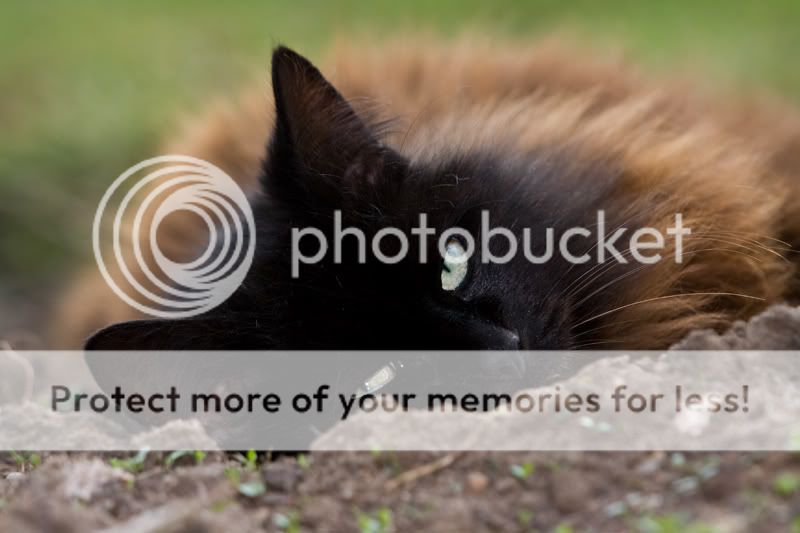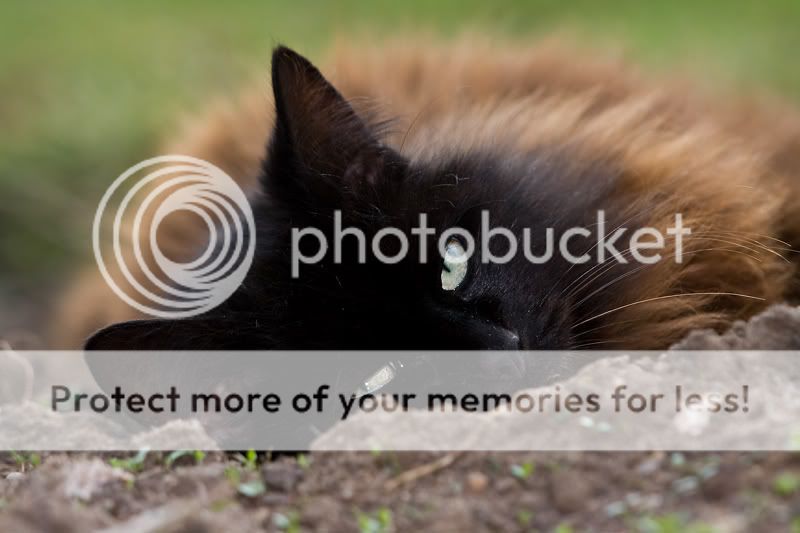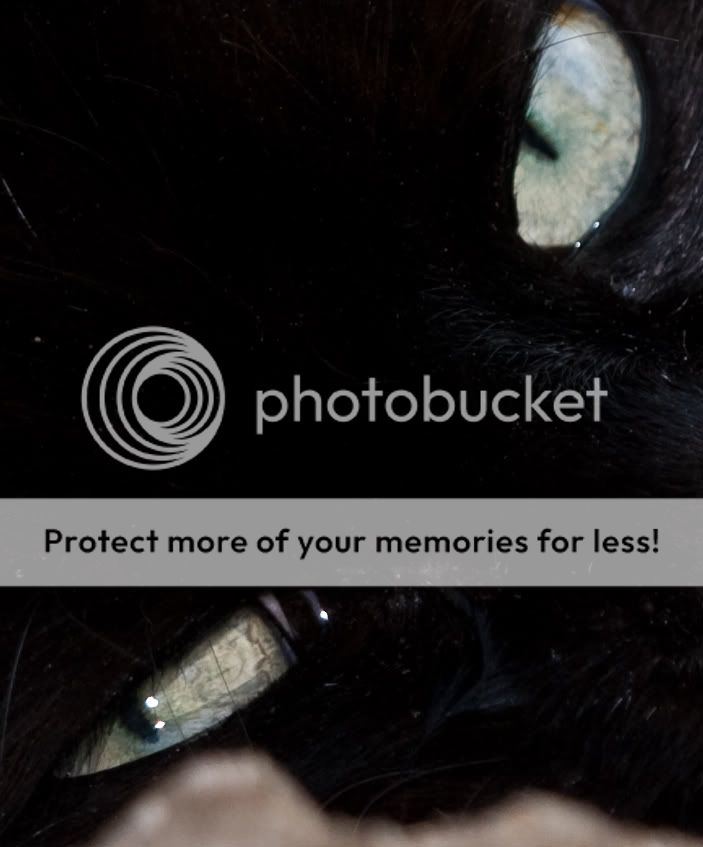First I'm going to try and show partly why we have this difference of sharpness assessment going on between the different parties in this thread;
So I'll show you a little kitty:
Out of the camera, RAW processing and some light sharpening at the large size, but no sharpening through resizing. I just went in one full stage from 3500 pixels down to 800 on the longest side and uploaded to photobucket.
Now we contrast that to this shot here:
This is the very same shot as above, but this time I sharpened in stages as I resized the shot. I also resized in smaller stages as follows:
Fullsize - unsharpen mask - radius 0.8, threshold 4, amount (around 90 I think but its adjusted to the amount needed based on viewing the image)
2000pixels on the longest side - unsharpen mask - radius 0.8, threshold 4, amount (around 90 I think but its adjusted to the amount needed based on viewing the image)
1000pixels on the longest side - unsharpen mask - radius 0.8, threshold 4, amount (around 90 I think but its adjusted to the amount needed based on viewing the image)
800pixels on the longest side unsharpen mask - radius 0.8, threshold 4, amount (around 90 I think but its adjusted to the amount needed based on viewing the image)
Note that in the last two stages the amount is often very small, around 20 or so most times.
However that isn't the only lesson the cat can show - take a good long hard look at the photo. Looks like the eyes are in focus right?
Wrong - only one eye is actually in focus in these shots - resizing and resizing with sharpening has gone a long way to try and hide this and if I were to selectivly sharpen the softer eye more so I could hide the effect even more for a websized shot.
Now there is nothing wrong in this approach - editing to achieve the best possible result for your chosen output is part of photography - but I still don't lie to myself. I still know that eye is soft (in fact normally this sort of shot wouldn't get processed but its a special case

)
Here you can see a 100% crop from the shot - clearly showing the difference in focusing on the eyes:
This is an important lesson because (and I was the very same when I started!) as a newer photographer the degree of sharpness of the "upper" eye might not be of concern and the shot overall works - but to those giving the crits here (and I'll add myself as well) its not up to standard. This is key difference and I'm honest when I say that pushing yourself to achieve the higher standard is the only way one can progress through photography. Be proud - certainly be proud of what you do produce, but don't let yourself slip into complacency - especially in the early days.
by chance do you have any kind of filter on your lens? Like a UV filter?
A very good point and it could be a reason for the lower optical performance - a cheap UV "protection" filter can and will affect your shots. I've even seen examples where a cheap UV filter has messed up the AF of a shot (remember AF sensors read the light that comes through the lens) leading to softer shots and slight miss focusing.
We keep going on about focus, but none of the shots has any good light on the models face, you need to use a reflector or fill flash if you are in the shade
Another excellent point and something we can build on as the sharpness/focus point I think is done to death now - and there is more one can learn directly from these shots - so its time to jump at exposure and for that we are going to look at Histograms!
Now read up in your camera manual for activating histogram displays when reviewing shots - its possibly one of the most powerful tools in the DSLR camera body for shooting and highly advantageous to learn how to use.
When you review a shot with a histogram display you'll see a graph showing a range of values over the whole shot. The only parts you need to worry about at the ends of this graph - this middle can do whatever it wants as there is no set shape for it to be - but the ends are all important.
The far left end of the graph is underexposure and represents areas of your shot that are pure black, no detail, just black - whilst the far right represents overexposure - pure white areas with no detail.
Experiment with viewing the histogram on some of your shots (activating a levels edit in most editing software should show a histogram display for shots on a computer). Take shot 2 for example it will have a very high and clear line running right up the left hand side. On the camera body (in most but not all cases) you will also get a visual display of the shot and this overexposed area will blink on and off to show you where it is.
This shows you that you've overexposure and the blinking (if you have it) shows where. Now this overexposure is dangerous as no amount of editing can restore the detail and content lost in it - try all you will you won't get that detail back*. This tell you the photographer a few things:
1) You have overexposed the shot and can go back and try to take another shot to try and reduce this overexposed component.
2) You have a tonal range from the brightest point to the darkest point that is too great for you camera to expose correctly for all points - some will have to either over or under expose to fit into a single exposure.
However that is not all as you can modify the light you have to try and reduce the range of the lighting values you have to work with. This works in two basic ways - either try to increase the light over the darker areas or try to reduce the light over the brighter areas - or combine parts of the two.
Examples would include:
a) Using flash to boost lighting (fill/fill flash) in the darker areas and let you expose for the brighter areas of the shot
b) Using a reflector to reflect light into the darker areas and thus achieve a similar effect to using the flash
c) Use some form of light diffuser to break up/reduce the light falling on the subject - this can be a natural feature like shaded areas or a light diffusion layer from a 5in1 reflector.
Learning to use these tools correctly is important and will greatly help to give you more control over the shots you are taking.
There is more info on histograms as well as more articles on a wide range of photographic and editing aspects on this site here:
Ron Bigelow Photography Articles
Histograms part 1
Reading Histograms-- Part I
* however shooting in RAW mode can give you a slight buffer on this and let you restore some detail in very marginally overexposed areas of a shot. Its a slight buffer, not a cure sadly, but its worth having - esp if you are shooting a brides white dress















